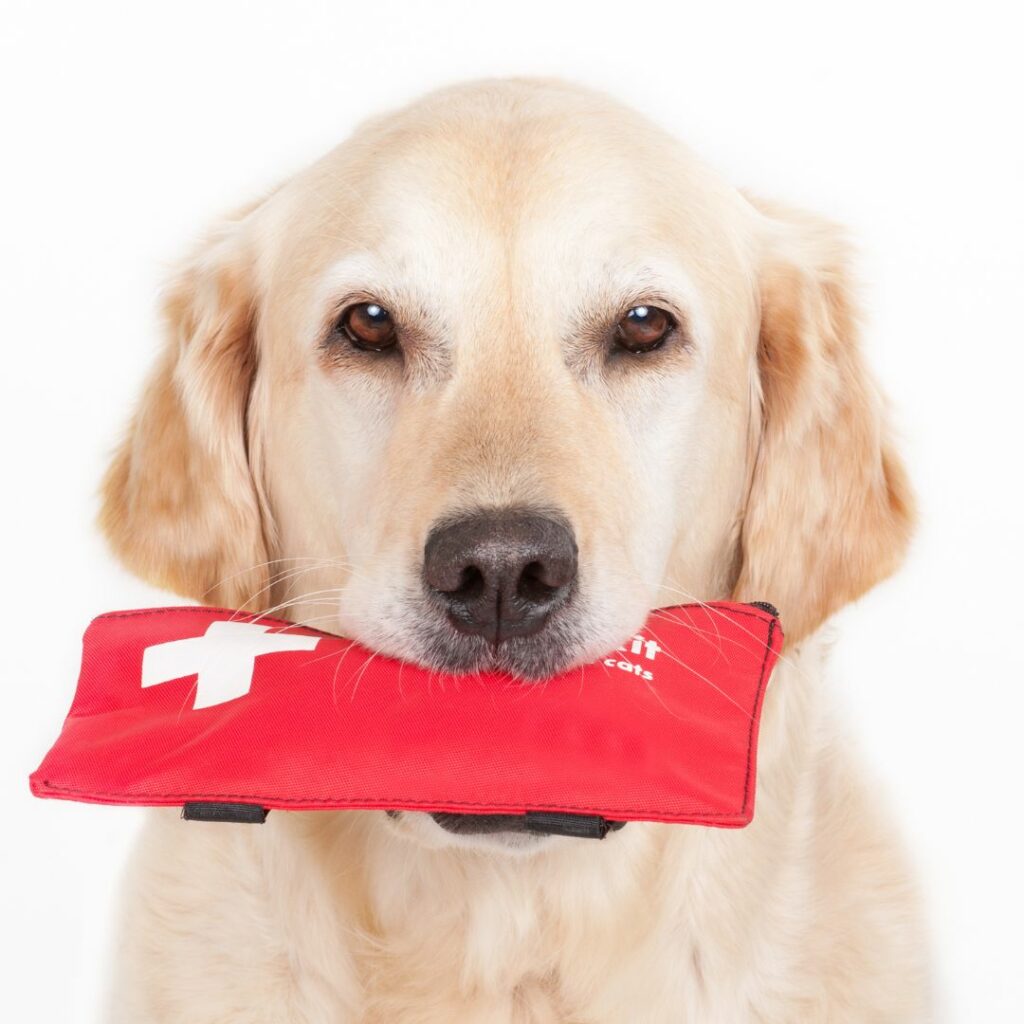It’s not a fun thing to think about, but no matter the age of your dog, things can happen. Unexpected things. Random things. And rather than be completely caught off guard, why not do some prep? When everything is great is the best time to think about basic first aid for you dog, and now is the time to make sure you have what you might need on hand.

Getting to the vet, of course, is our priority in emergencies, but even in that scenario, there are things you can do in the meantime. And sometimes, it’s not an emergency but something you can take care of completely on your own. The important thing is to be ready and to have the materials you need in the house or car or truck.
We recommend that you have a first aid kit in all of those locations: at home and in each of your vehicles. This especially holds true if you have a dog that is very active with you and exponentially so if you have a hunting dog.
Let’s start by looking at what you should have in your kits.
First aid kit for your dog
This will look a lot like a kit you would have for humans, but again, to be prepared specifically for your dog can make a scary situation a bit less stressful.
You can purchase emergency kits of all sizes here or you can build your own.
- wrapping gauze. Think about the size of your dog when you purchase this. How much would you need if you were to wrap the upper part of their back leg, for example?
- nonstick bandages that are waterproof but won’t get stuck in their fur
- adhesive medical tape
- a small pair of scissors
- cotton balls and hydrogen peroxide
- an antibiotic spray or ointment
- digital thermometer
- tweezers (think tick removal)
- magnifying glass (to check wounds, splinters, ticks, etc.)
- a small and bright flashlight
- a micro fiber towel is great for cleaning up
- leash and collar and soft muzzle
- traveling bowls
- nail clippers
- antiseptic wipes or soap
- list of emergency numbers
- and treats, of course
You should also talk to your vet about your dog specifically. Are there other things they would recommend having in these kits? Your vet is your best guide.
And if you want training in first aid for your dog and can’t find anything local, the American Red Cross has an online program you can check out here.
Basic First Aid Safety Tips
- Never try to hug a dog in distress or who has been injured. This is for the safety of you both.
- Keep your face away from your dog’s mouth. They are likely frightened and would not mean to harm you but might be in self-protective mode.
- If you have a soft muzzle, apply it.
- If you need to move your dog, ask for help if you can.
For some basic responses to specific situations, check here.
Again, we can’t emphasize this enough: some training would be best, but if that’s just not possible, reading up and preparing is excellent.
And finally, you might want to read what we’ve already written on common household items that are dangerous for your dog.
